disclaimer: I was approached by **** Audio to review the Opera Factory OS1 Pro. Although produced by Whizzer, the OS1 Pro is being marketed in cooperation with KBear which explains why the KBear rep was involved. I have no financial interest in KBear or Whizzer, nor do I have any details as to the relationship between the two companies. I have received no remuneration for this review and purchased the item for review via their amazon store with an understanding that I would be refunded at a future date after the review was released. If you have an interest in the OS1 Pro, it can be purchased through Amazon for $26 USD (at the time of this writing).
Unboxing / Packaging:
Opera factory packaging has always had a creative flare to it. Memory serves the last model I reviewed came in a can style container with wild graphics on. Much like that, this model comes in a lift top style box with graphics all over it in black, white, and gray with highlights like the Opera Factory name in metallic gold. The rear of the box has company information, model number, and model color selection but does not reveal the specs like a lot of other product packages do. While the graphics are youthful and vibrant, I’d appreciate a few more informative bits scattered in among them. Once you lift the box top, you are greeted with a foam tray containing the earpieces with cable attached in a semi-heart shape. A tab at one end of the foam makes lifting it out an easy task and beneath it we find a compartment for the cable and one for the tips, manual, and warranty card that round out the kit. No case is provided, but a velcro cable tie is which helps some. Three sizes of silicone tips are provided but the kit does not contain any foams. Its a fairly basic kit, but that is to be expected in a budget model.

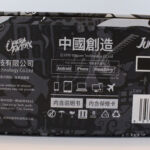
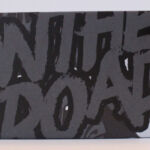
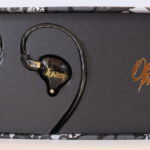
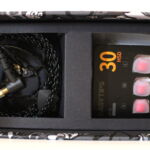

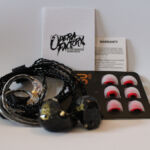 Build/Fit:
Build/Fit:
The OS1 Pro is an all resin shell in two parts with a faceplate and an inner shell that includes a cast in nozzle. The resin used is translucent black with gold sparkles dotted throughout and is dark enough to conceal most of the details unless the earpiece is placed directly on a light source and then the wiring and driver can be seen through the casing. The face plate is faceted and has a brass indexing pin behind the nozzle. Face plates have opera factory on the right and junior on the left and are marked L/R on the inner shell as well for indexing. The bi-pin connector is interesting as well as it is a raised type but conforms to neither of the current standards as it is not QDC, nor is it the squared off version like we’ve seen on the Nx7 and some other models. Instead, the connector is round and the outer diameter of the connector is roughly the same as the inner diameter of the connector on the cable side so the cable does mate over the connector on the earpiece. Standard .78mm bi-pin cables will work as well, but look somewhat out of place. Shape is a very standard upside down tear shape in a medium size and weight is fairly low which combined to make the OS1 pro a fairly comfortable in-ear to wear. Isolation is only average due to materials.


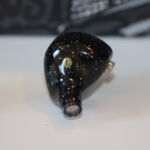



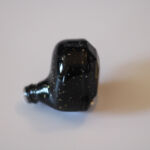

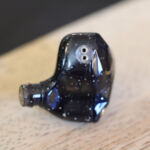 Internals:
Internals:
The OS1 uses a single 10mm dynamic driver with a graphene coated diaphragm and an N52 high strength magnet. With a nominal impedance of 22Ω and a sensitivity of 112 dB/mW, the expectation is that the OS1 pro should be easy to drive with a phone or tablet as impedance is fairly low and sensitivity is very high. This also can sometimes produce problems with hiss when more potent amps are used on high sensitivity iems. I found the OS1 did well when paired to a phone but did like a bit more power and scaled some both qualitatively and quantitatively with better source devices. While the ceiling is fairly low, it is worth investing in an amplifier to get the most out of the OS1. This is something we are increasingly seeing with dynamics coated with exotic materials and stiffened beyond what was normal a few years ago.
Cable:
The cable is very typical of those offered with budget in ears. It starts with a 90º jack so at least we begin well, especially considering the proper strain relief at the cable exit. The cable is a double twist with two pairs wrapped tightly together from jack to splitter and then exiting as two looser pairs from the splitter to the earhooks. The splitter is the standard hard plastic Y shape with short reliefs on both sides. The right hand side has a red dot on the connector to identify it and also has the single button remote/microphone while the left side is clean from splitter up. The earhooks are a heavy clear plastic sheathing that does react to a heat gun so can be shaped as desired. As previously mentioned the bi-pin connectors are .78mm and a standard cable will work although the provided one uses a proprietary hood that covers the connectors base.
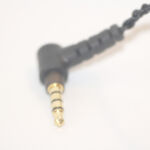
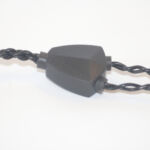
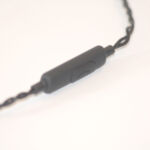
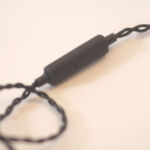
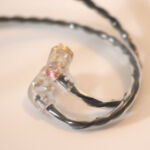 Sound:
Sound:
 Bass:
Bass:
Sub-bass has a huge emphasis with its center around 50Hz and a gradual drop-off above that point but bass remains elevated compared to the rest of the signature all the way through its range. Bass is boomy and does bleed into the lower-mids more than a little. This is both obstructive and a bit overly warm at times. These are advertised as bass forward and they most certainly qualify as they have a ton of slam and rumble, if not the cleanest bass presentation one will find.
Mids:
Lower mids and upper mids share roughly the same level but the upper cut through much more clearly as the bass-bleed obscures some of the lower-mids and keeps male vocals from being presented as cleanly as they should be. Guitar growl is good with a nice rasp to it, and lower voices do cut through the mix enough not to get buried despite the bleed. True mids form the trough of the V and lack enough energy to make strings realistic, but for an in-ear made for EDM and pop, this was never the focus. Upper-mids do start to rise some and ultimately plateau out as they cross into the lower treble which gives female vocals a lift and pushes them out in front of their male counterparts. The upper-mids/lower treble do a good job of lifting the vocals without getting overly strident which is probably partially because they are still not anywhere near as forward as the bass.
Treble:
Lower treble has good detail and a texture before falling back above the 5kHz mark and ultimately rolling off at about 12kHz. Snare rattle is reasonably good but lacks a little crispness and cymbals lack the energy to sound entirely real as well. Still at $25, these deliver enough to be a fun listen for EDM and pop and have enough treble energy to give some sense of openness and air if lacking a bit of sparkle up top.
Soundstage / Imaging:
Stage is wider than deep which is not atypical in budget models, but the OS1 pro does manage some height in the mix as well. Overall dimensions are fairly small with most pieces feeling like the band is standing directly in front of the listener with some left to right spread. Seating the orchestra is tough as there is enough blur due to the bass to overlap some instruments and instrument separation is at best average. Same goes for layering, the OS1 Pro is already a bit boomy and when fed a diet of high complexity, fast, bass tracks it compresses quickly and becomes muddy. Imaging is acceptable but is not assisted by the layering and separation issues.
Thoughts / Conclusion:
I reviewed the OM1 years ago and concluded that it was geared toward the youth and those who liked heavy bass without a lot of concern for audiophile tuning. I think the same can be said for the OS1 Pro. Those looking for lots of boom and slam will find it appealing as it delivers on its promise of big bass. Those looking for a balanced in-ear will probably want to look elsewhere as this one is purely about the fun of EDM and pop and not designed to cater to a more jazz and piano oriented listener.
Bass - 5/10
Mids - 5/10
Treble - 6/10
Soundstage - 5/10
Imaging - 5/10



























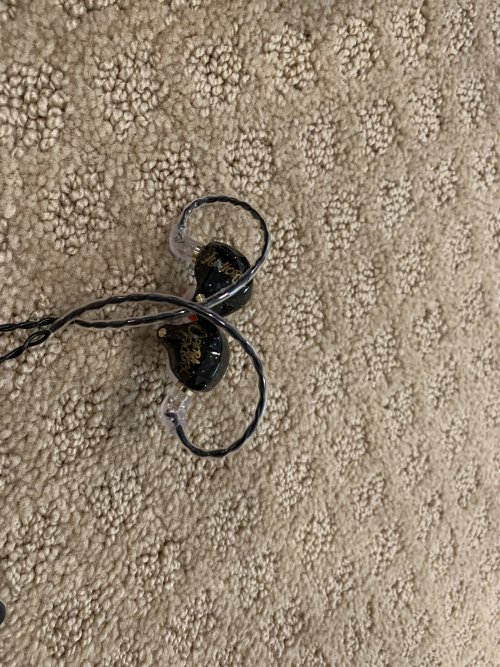



I will modify it if need.